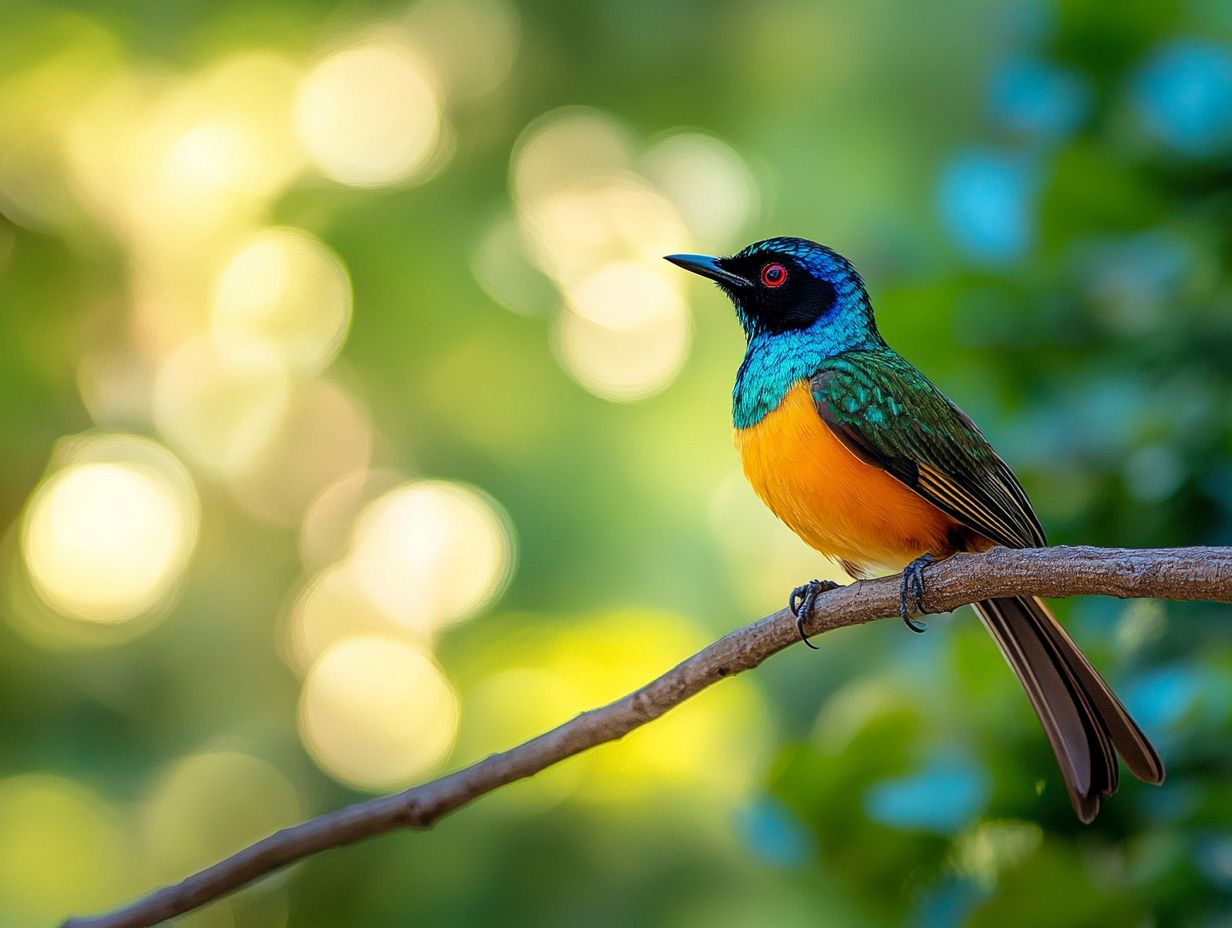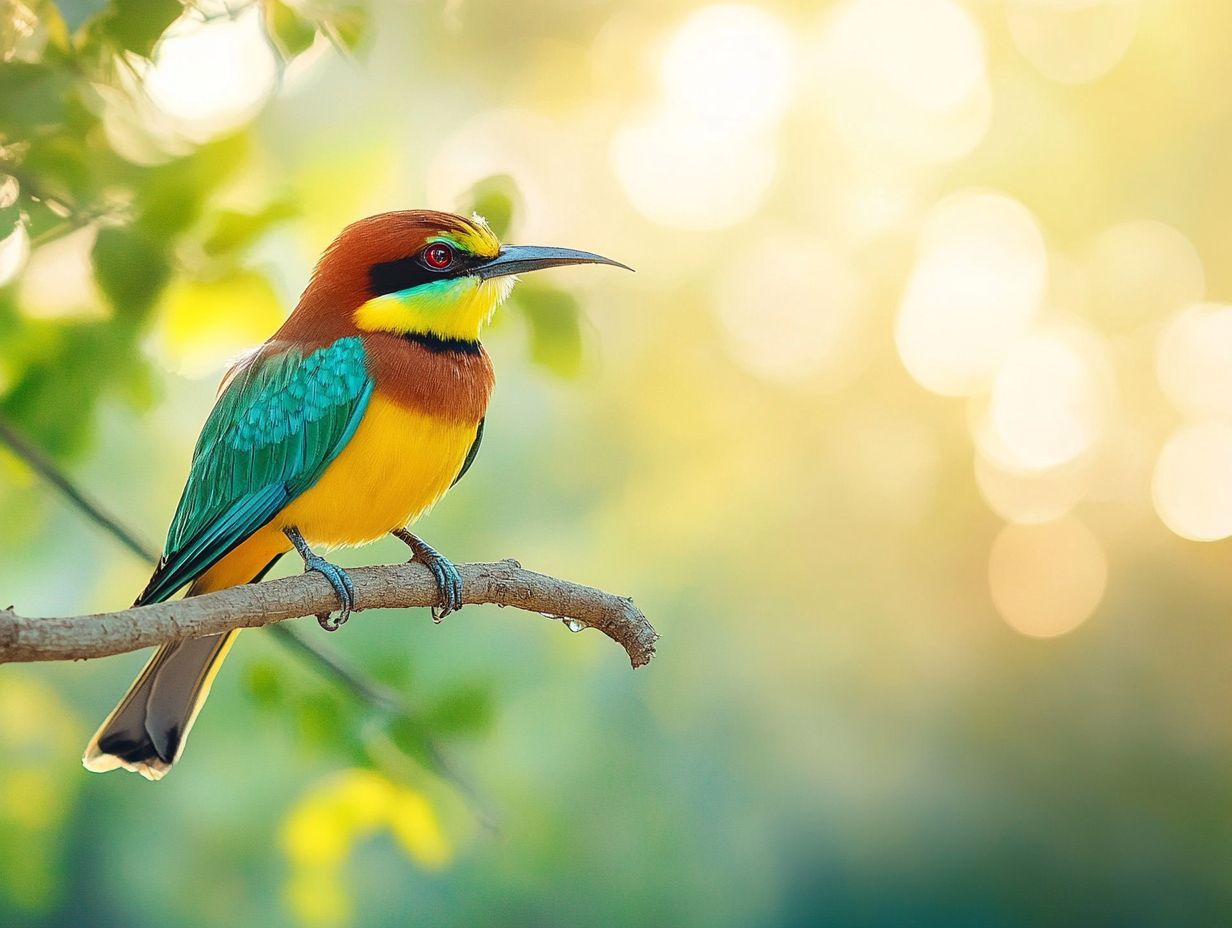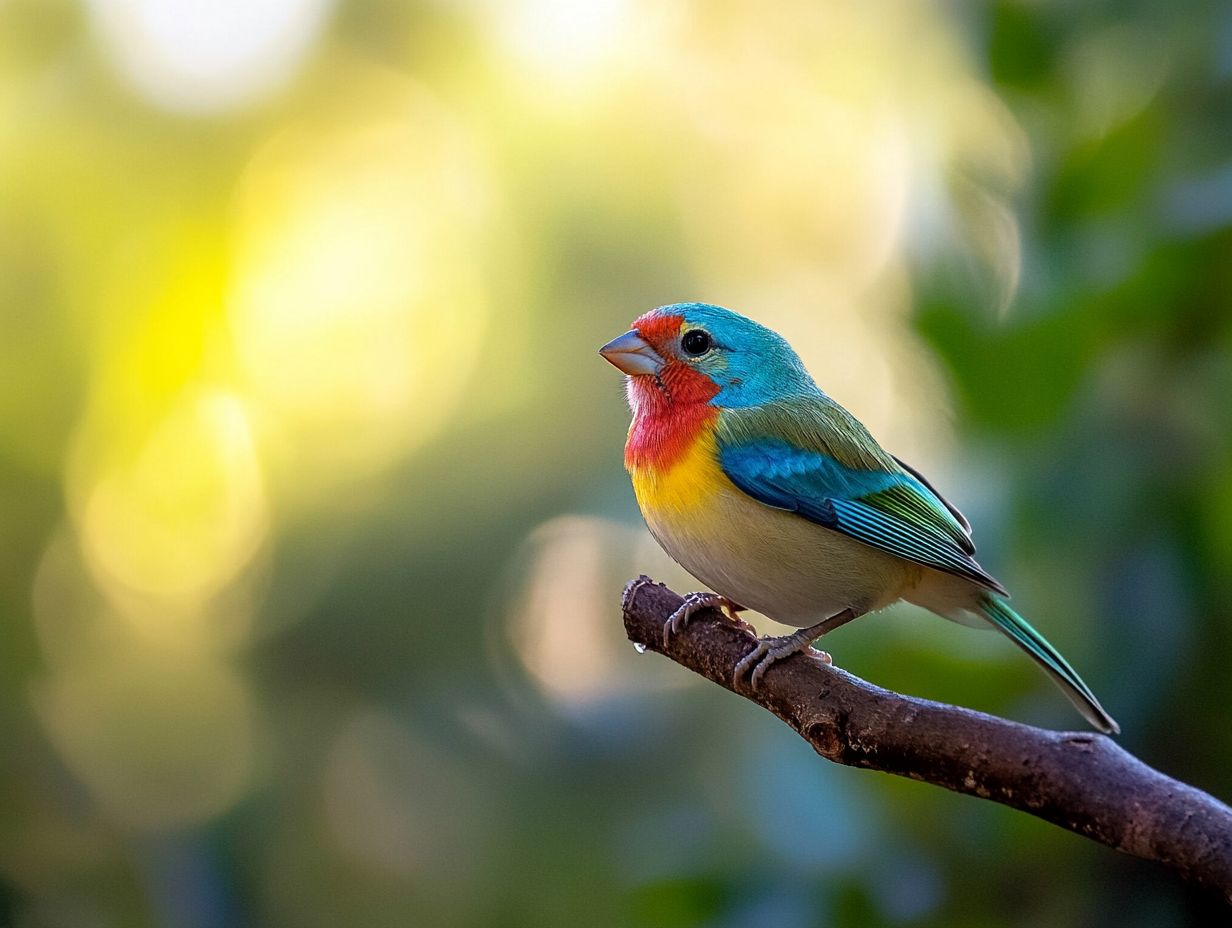How to Use Composition to Enhance Bird Photos
Bird photography is more than just observation; it s an art that needs a keen eye and a good understanding of how to compose images.
This guide covers essential techniques like the Rule of Thirds and Leading Lines. You ll learn to frame your subjects elegantly and precisely.
Light and color can transform your photos, especially during golden hours. This is when every shot can become a masterpiece!
Contents
- Key Takeaways:
- What is Composition?
- Composition Techniques for Bird Photos
- Using Light and Color in Composition
- Tips for Achieving a Balanced Composition
- Frequently Asked Questions
- How can leading lines be incorporated into bird photos?
- Can symmetry be used in bird photography?
- How can framing enhance bird photos?
Key Takeaways:

- Use the Rule of Thirds to make your bird photos look more appealing.
- Incorporate leading lines to guide your viewers’ eyes toward the subject.
- Experiment with the foreground and background for added interest.
What is Composition?
Composition is the way you arrange things in a photo. It s important for making your main subject stand out and grab attention.
By using composition techniques, you can create emotions and tell a story that draws the viewer in.
Composition Techniques for Bird Photos
Good composition techniques are key to capturing stunning bird photos that engage viewers.
Master these techniques to highlight bird behavior and habitats, ensuring each image tells its own story.
Rule of Thirds
The Rule of Thirds divides your photo into nine equal parts. This method helps you place your subjects thoughtfully for better balance.
Position your main subject, like a majestic bird, along these lines or at their intersections to create an engaging photograph.
Incorporate elements from the environment to enrich your composition. Experiment with different focal lengths and angles to enhance your images.
Frame your subject in a way that encourages viewers to explore the whole picture. Make your composition an experience worth sharing.
Leading Lines
Leading lines are visual elements that guide the viewer s eye to the main subject, creating a clear focus in your photo.
In bird photography, use leading lines to direct attention to your captivating subjects. Natural elements like rivers or tree branches can serve as effective guides.
Look for these elements, especially at sunrise or sunset, as the light can enhance their impact and make your images more compelling.
Foreground and Background

In bird photography, the relationship between the foreground and background is vital. It can profoundly influence both the composition and emotional resonance of your images.
A thoughtfully chosen background adds depth and context, transforming a mere snapshot into a compelling narrative brimming with nuances. Selecting the right foreground elements guides the viewer’s gaze, highlighting the bird while grounding it in its environment.
To truly capture these dynamics, experiment with various angles. This exploration can unveil unexpected charm and vibrancy. Maintain an optimal shooting distance to ensure details remain crisp without overwhelming the observer.
By focusing on these compositional elements, you can elevate your photography. For those interested in bird photography, understanding exposure will allow the essence of your feathered subjects to truly shine.
Symmetry and Patterns
Using symmetry and patterns creates a compelling visual story in your bird photography. Focus on these elements to showcase the stunning features of different species.
For example, taking a photo of a bird sitting evenly on a branch offers a balanced composition that naturally guides the viewer s eye toward the exquisite details of its feathers. Pay attention to repeating patterns, like tree branches or the rhythm of waves in the background, to create a harmonious backdrop that elevates your primary subject.
To refine these skills, take the time to study your environment. Look for natural lines or shapes that complement the bird’s form. This approach helps you craft more dynamic and engaging photographs.
Using Light and Color in Composition
Light and color are essential for enhancing your bird photographs. Especially during the enchanting golden hour, they provide a rich canvas for artistic expression.
Golden Hour Lighting
Golden hour lighting brings soft, warm hues to your images. This magical time boosts emotional storytelling.
Taking advantage of this fleeting moment can amplify the impact of your photographs. Scout your locations ahead of time to familiarize yourself with the landscape and the behaviors of the birds you aim to capture. Arriving early allows for a seamless setup and gives you the chance to optimize your camera settings (like ISO and aperture) to embrace that gentle light.
Techniques such as backlighting can produce captivating silhouettes, while the ambient tones enrich your compositions. This fosters deeper engagement with your audience and enhances the overall visual impact.
Remember, patience is your greatest ally in pursuit of the perfect shot. The golden hour offers not just light, but a narrative waiting to unfold.
Contrasting Colors
Using contrasting colors is a powerful technique in bird photography. Selecting backgrounds that complement or contrast with your subject highlights details beautifully.
Imagine a bright yellow bird perched against a deep blue sky; it captures attention and evokes feelings of warmth and tranquility. Techniques like using a polarizing filter to enhance colors or adjusting your exposure settings can further emphasize the contrast in your images.
Don t shy away from experimenting with different angles and lighting at various times of the day. This will allow for dynamic color shifts that elevate the storytelling aspect of your photographs and enhance their overall composition.
This intentional use of color contrast fosters visual interest and creates an emotional connection between the viewer and the scene.
Tips for Achieving a Balanced Composition

Achieving a balanced composition in your bird photography is crucial for crafting visually captivating images that resonate with your audience. Learning how to use natural light can enhance your ability to enable emotional storytelling through your work.
Employ techniques like strategic framing and thoughtful cropping to effectively highlight your subject. For those interested in avian photography, following specific tips for photographing rare bird species can ensure every shot leaves a lasting impression and captures the essence of the bird’s behavior and surroundings.
Framing and Cropping
Framing and cropping are vital techniques that isolate your subject and enhance viewer engagement. This ensures that your bird photography is not just a feast for the eyes but a captivating experience that draws attention.
Skillfully employing these methods directs the viewer’s gaze to the details of your avian subjects, highlighting their color, texture, and behavior. For example, framing a bird perched on a branch with softly blurred foliage in the background creates a natural border that guides the viewer s eye inward.
Cropped tightly around the subject, distractions are eliminated, allowing for a more intimate connection with the bird. Embracing the rule of thirds adds finesse, providing balance and dynamism to your composition. These thoughtful approaches enhance visual appeal and cultivate a deeper relationship between the viewer and the wildlife captured through your lens.
Creating Depth
Creating depth in your bird photography adds layers of visual interest, immersing viewers in the environment and fostering a deeper connection with your subject.
Incorporating techniques like varying your shooting distance and using foreground elements evoke a greater sense of dimension. For instance, framing a bird with branches or flowers in the foreground creates a dynamic layer that guides the viewer s eye into the scene.
Adjusting the distance between your camera and the bird helps isolate the subject against a softer background, enhancing its prominence. For more insights, consider exploring techniques for photographing birds in flight. These methods not only enrich your composition but also amplify emotional resonance, inviting your audience to experience the beauty of nature personally.
Emphasizing the Subject
Emphasizing the subject in bird photography is essential for directing viewer attention and ensuring the focal point resonates beautifully within the composition, contributing to a balanced image.
Manipulating elements like lighting, focus area, and framing draws eyes to your avian subjects, enriching the narrative of each shot. Utilizing a wide aperture creates a pleasing blur in the background, allowing the bird to stand out prominently.
Placing the subject within the frame using the rule of thirds fosters visual harmony and promotes an engaging viewing experience. These artistic choices transform ordinary moments into captivating stories, inviting viewers to appreciate the exquisite beauty of the natural world.
Frequently Asked Questions
What is composition and how can it enhance my bird photos?

Composition refers to the placement and arrangement of elements within a photograph. By using composition techniques, you can highlight the beauty and unique characteristics of birds in your photos.
What are some composition techniques that can be used to enhance bird photos?
Common techniques include the rule of thirds, leading lines, symmetry, and framing. Each technique adds depth and interest to your bird photos.
How can the rule of thirds be applied to bird photography?
The rule of thirds divides the frame into thirds both horizontally and vertically. Placing the subject at the intersection of these lines creates a more visually appealing image.
In conclusion, mastering composition is fundamental in bird photography. By applying these tips, including how to use natural framing, you can transform your photos into compelling visual stories that capture the heart of nature. Experiment with your photography today!
How can leading lines be incorporated into bird photos?
Leading lines are visual pathways that guide the viewer’s eye toward the subject.
Use tree branches, fence posts, or even the curve of a bird’s body to create these lines in your photos.
Can symmetry be used in bird photography?
Symmetry can create stunning images in bird photography.
Look for symmetrical patterns in nature, like a bird on a branch, or mirror the image during editing to achieve this effect.
How can framing enhance bird photos?
Framing involves using elements in the foreground to highlight the subject.
For instance, use tree branches to frame a bird for a more dynamic and interesting shot.






